This blog is mostly about manual lenses which are usually 30 to 50 years old. And while most of them are surprisingly reliable the are a few things you should check before or after buying a lens.
This checklist is based on the experience I gained from buying more than a hundred lenses since I discovered how much fun it is to use them on Sony’s Alpha cameras.
If you have additional info about a defect not listed or disagree with my assessment please leave a comment!
Scratches on the lenses
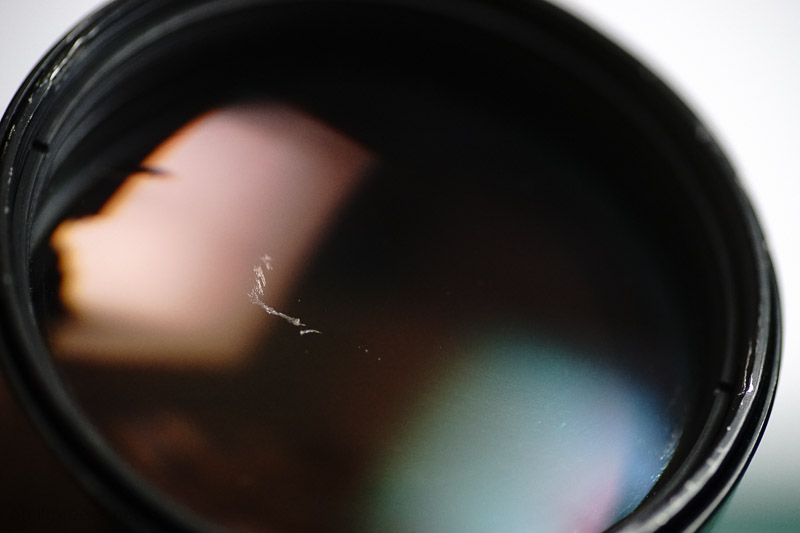
Use a large light source like a window and place the lens between you and the light so that you can see the colorful coating of the lens.
Scratches are seldom a problem in the real world but they lower the resale value of a lens. In theory they could reduce the contrast of a lens or cause some flare but I have never seen that happen.
You can’t really do anything to restore coatings but it sometimes makes sense to fill larger scratches with black paint to avoid light scattering.
Oil on the aperture
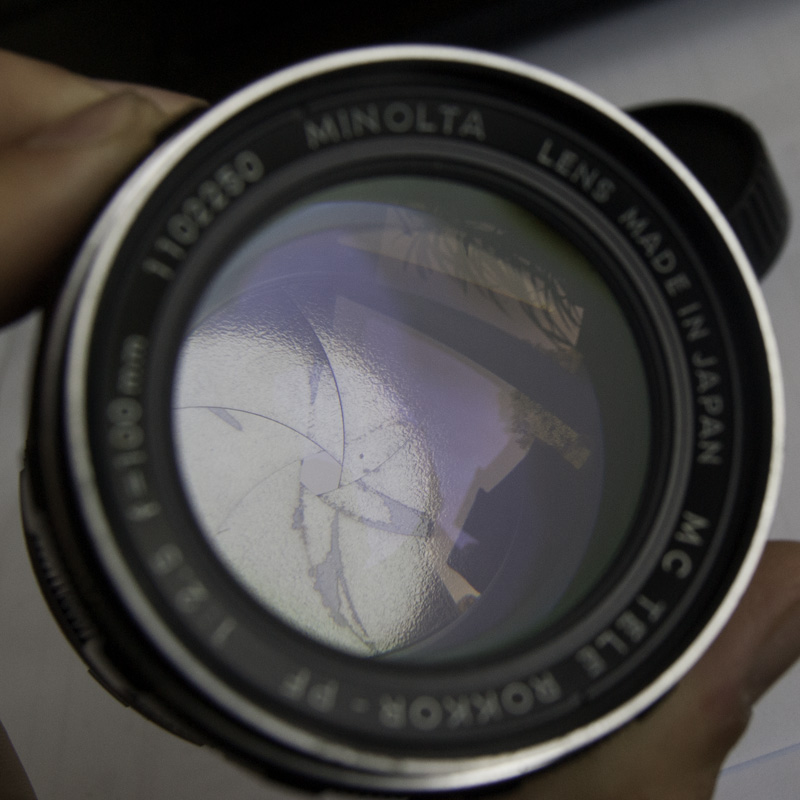
Quite a few older lenses suffer from oil on the aperture blades. Close you aperture as far as possible and have a look at the aperture blades. They should be dry and free from oil. If they look like in the image above it is likely that they will open and close slowly.
Using a lens with an oily aperture on a mirrorless camera is not a problem because you meter and focus with the aperture already closed. I use the lens in the picture regularly.
On a classic SLR it will be a problem because the camera will meter and focus with the aperture opened and the aperture will be stopped down the moment you press the shutter button. But because the aperture is slow to close your images will be overexposed and and not stopped down as far as you wanted
It depends a lot on the lens but in general cleaning the aperture requires less skill than other repairs. Apertures are often quite easiy to access and you can clean them with Isopropyl alcohol (affiliate link). Optimally you clean the whole aperture assembly because that’s were the oil is coming from, just cleaning the visible part will only do in light cases.
But be careful to document every step of the dis-assembly and be warned that it is often hard to reassemble an aperture assembly once the aperture blades have been scattered over your carpet (I am speaking from experience 😉 ).

Dust
You will find dust in about any lens and unless there are huge amounts of it dust won’t affect your image quality.
You or a technican can open a lens, clean all the elements and reassemble it but I wouldn’t bother unless there are some defects like sticky lubricants.
Fungus
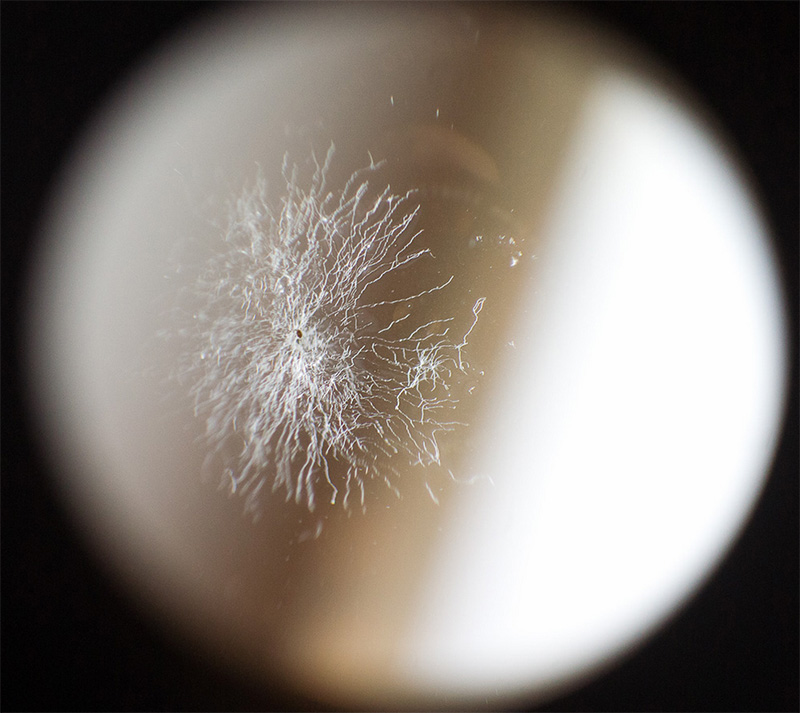
Fungus isn’t always easy to see because it is inside the lens. You can easily spot it if you shine a flashlight trough the lens.
Fungus looks like many little roots which grow on the lens surfaces.
Here is an image I took with the same lens:
In my experience you still can use many lenses which are not too badly affected. They have a little less contrast but you wouldn’t notice it if you didn’t look for it.
Often fungus can be removed without any traces with a hydrogen peroxide solution but this requires quite a bit of skill and special tool because the lens has to be disassembled. Many repair centers don’t accept infected lenses.
There are certain fungi which damage the coatings or the lenses themselves so that a lens can’t be fully repaired.
According to Zeiss fungus will grow under these conditions:
- Relative humidity of at least 70% (more than 3 days)
- No or little airflow
- Darkness
- Nutrients (textile lint, traces of grease, varnish, dust and dirt)
- Temperatures between 10 and 35°C
So it is a very bad idea to store your lenses in your damp cellar. I store my lenses in a bright cabinet without front lens caps and while I have a few lenses with fungus it hasn’t grown in those or infected other lenses. If you live in a climate with very high humidity it could make sense to buy a climate-controlled cabinet.
De-Centering
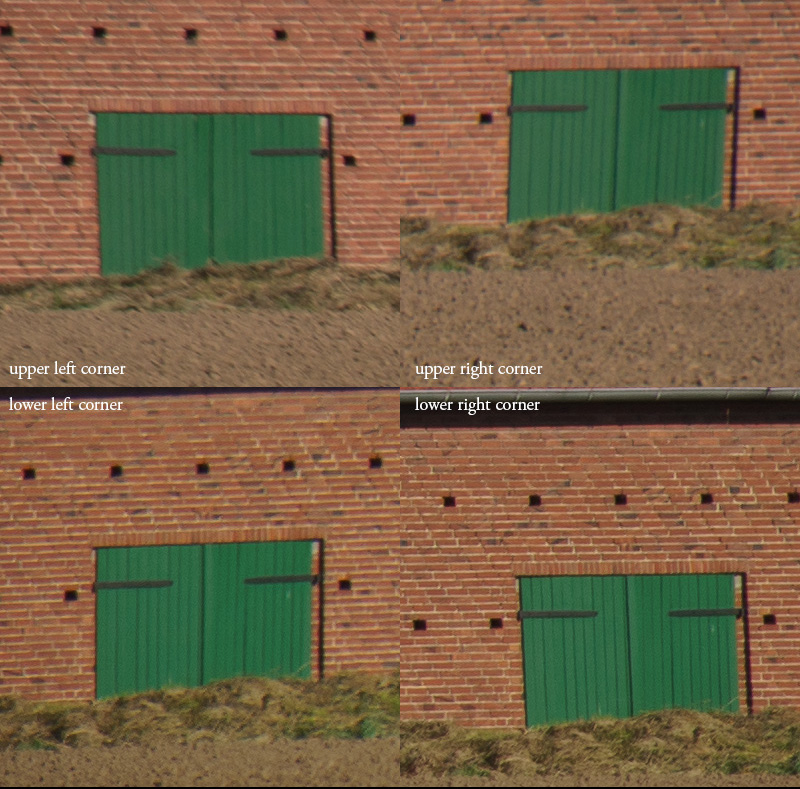
The easiest way to detect de-centering is the church tower test (German site but I think it is self-explanatory. No lens is centered perfectly so if you look close enough any lens is decentered. But if you can see the difference between the corners at first sight this is a reason to return the lens.
I think de-centering in a wide-angle lens is more of a problem than with tele lenses but I would always try to return a decentered lens.
Re-calibrating a lens requires special tools and special equipment and not every lens can be re-calibrated (Samyang lenses for example). I think this operation is beyond the ability of almost any hobbyists and not many repair technicians do such repairs. If you know a good repair shop please leave a link in the comments.
The focusing ring does not turn smoothly
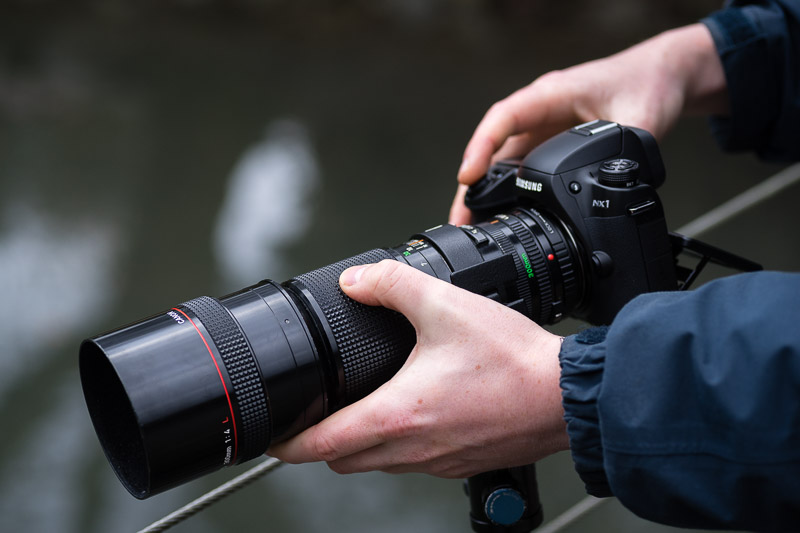
The focus ring is very hard to turn or doesn’t turn at all
This usually results from unstable lubricants and it can be fixed by a skilled technician who can remove the old and replace it with new lubricant.
The focus ring has some play
This can have different reasons, but it is often caused by dissolved bearings. Many Canon FD lenses are affected by this problem, for an incomplete list have a look at this thread from a German forum.
The focusing ring turns unevenly
This can happen if the lens fell to the ground or got knocked against something. I think it is quite hard to fix but most older lenses are surprisingly robust and this is unlikely to happen.
Some Lens Buying Advice
These are all the defects I have come across so far, there are a few others like lens separation or yellowing from radioactivity. The vast majority of the 100 or so manual lenses I have bought in the last 4 years were without issue and the last thing I want is to keep you from buying used lenses. Check out my Manual lenses on the Sony a7 beginners guide for more information.
If you are a first time buyer it might be a good idea to either buy locally and check the lens carefully or to pay a little more and buy online at a commercial seller who offers returns.
I buy most of my lenses at ebay from private selles. This is a bit more risky but the cheaper price outweights the risk for me and so far my experience has been a positive one with two exceptions which cost me about $60 together. I had to return a few lenses but this usually worked well.
Ebay
- If the seller knows something about lenses he should mention that there are no scratches, a smooth focusing ring, no fungus and he should tell me how much the lens has been used.
- I get very catious if an item is sold “as is” and I don’t rely on the images too much. I can make a lens with many scratches on the lens look good and you won’t see fungus or a stiff focusing ring in an image
- Many sellers don’t know much about lenses when they sell grandpa’s old SLR, here I ask about scratches and a smooth focusing ring. It could also make sense to ask were the gear was stored, you wouldn’t want to buy a lens which has been stored in a dark and damp cellar because it is very likely that it has developed some fungus.
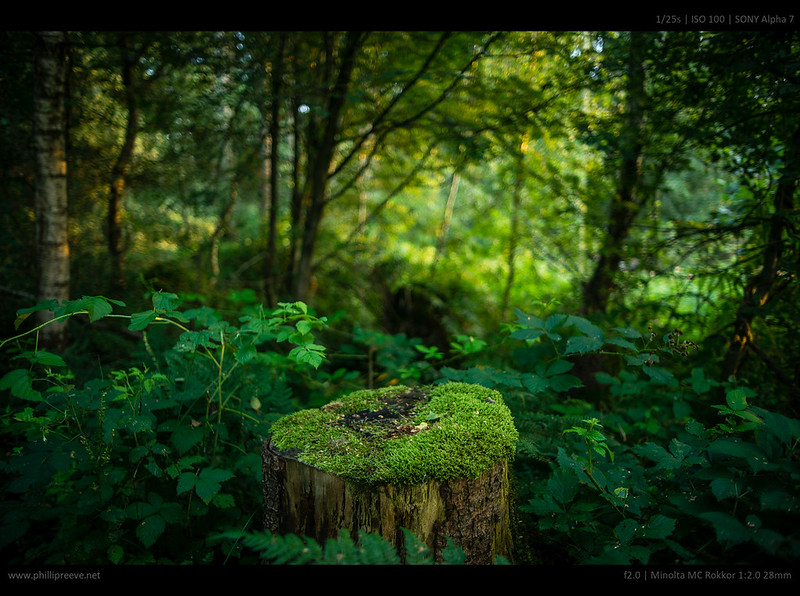
Links
- Markus Keinaht’s DIY page with many many guides on fixing and modifying phot gear
- Matt Bierner lenss disassembly videos (thanks Jai)
Other interesting articles
Manual lenses on the Sony a7 – A beginners guide
Minolta Lenses on the Sony a7 – ratings, impressions and sample images
This site contains affiliate links. If you make a purchase using any of the links marked as affiliate links, I may receive a small commission at no additional cost to you. This helps support the creation of future content.
Latest posts by Phillip Reeve (see all)
- Review: Samyang AF 75/1.8 FE - April 12, 2021
- The FE-List now has 113 lenses on it - March 25, 2021
- 2020 – Year’s end review - December 28, 2020
You mention some lenses (Samyang in particular) have no means to recalibrate for decentering. This is true, I found my new Samyang 12mm/2.0 was quite obviously decentered, but I looked inside anyway to see if anything could be done. I only took the front group out, saw that there was nothing that could be adjusted and put it back. But then miraculously the decentering went away! My thinking is that the lens was just badly assembled at the factory. So my point is that even if there’s no way to adjust the lens, it’s still worth to just disassemble and reassemble it carefully and sometimes this will make a bad lens turn to good. 🙂
On the other hand some other lenses (most notably Carl Zeiss Jena Flektogons in my experience) can never be perfectly aligned, there will always be at least one corner that will be softer than the others. 😐
Thanks for your insight, wouldn’t have thought about it. With Samyang lenses I wouldn’t dare to buy used and inspect them very carefully on arrival.
Thanks for answering my question with a full article!!! Coudn’t have wished for better!
Great article, I also use vintage lenses and I trip sometimes with those problems, sometimes I found a way to repair them, but not all of them.
I love your comments very much, thank you Phillip.
Recently, I bought a Super Takumar 35/2 (second version) in a very nice condition for only 28€ , but after an examination with a flashlight I noticed a beginning of fungus! Do you think I should store this lens separately from my other lenses? In other words, do you think fungus can contaminate other lenses?
I think you should make sure that the fungus will stop to grow but then you are safe to store it besides your other lenses
Some issues with lenses such as dust, oil on the aperture blades, stiff focus ring or a lens that doesn’t focus to infinity are actually not that hard to fix yourself.
I highly recommend this youtuber, who publishes excellent videos detailing how to disassemble various lenses:
https://www.youtube.com/user/mattbierner/videos
I have fixed many of my own lenses using these videos, and calibrated them so the infinity point of the lens is exactly correct for my adaptor.
thanks for the Link, I added it to the articel
Are my old Rokkor lenses useful on my little Sony alpha 5000?
I’m thinking of upgrading to an alpha 6000 but full frame sensor camera lenses are so heavy!
comments please.
Thank you,
Yes they are and notnall of them are large and heavy
Excellent post for use legacy lens hunters! 🙂
Dezentrierung: wer testet, testet manchmal schönen Mist, sofern er nur das halbe System bedenkt – werden die 4 Bildecken auch mit 180 Grad gedrehter Kamera fotografiert, so kann es sich bestätigen, dass nicht die Optik hauptsächlich dezentriert ist, sondern der Sensor, denn (auch) die “Taumelplatte” zum axialen Ausrichten der Sensorplatine ist niemals perfekt justierbar. Und im Gegensatz zur Optik kann sich das mit der Zeit noch deutlich “verändern” (ein toller Mist, über den sich anscheinend kaum jemand Gedanken macht …)
Thankfully, many if not most vintage glass is cheap enough not to justify a hefty repair charge unless of great value or rare. I can repurchase a Zeiss 50/2.8 Tessar for as much it will cost to service the helicoil. A nice Pancolar might be worth it.
I’d rather get a good sample from a reputable seller who discloses the true condition of his wares. That’s smart buying…
Our brand, K&F Concept, provide full lines of top quality camera accessories. You can find our products on website: https://www.kentfaith.com/
We are looking for business partners in each country to grow up together. If you are interested in this, welcome to contact me.
Mobile : +86-18272852157
Skype: c800c30fecafdde3
E-mail: lockguo@kentfaith.com
Thanks for the offer. We are fans of your adapters but we work independent from manufacturers.
Hey Phillip,
I have optical performance problem with my “new” Minolta Rokkor MD 400mm F4 and Im not able to discover the reason.
There is a relatively big white “foggy” spot in the center of the image. With bigger A value, the spot transofrms itself into small but clearly visible cross in the centre of the image. Its reflection of some kind, but I have never seen it before.
Its much worse in backlight, but visible even if there is not one directly in front.
Nothing is visible in the lens itself, just a very very few dust parts. The lenses on both sides are clean without visible flaws or scratches.
The sensor looks clean.
What could it be? I have it on A7ii + Novoflex adapter MC/MD
Thanx very much for any advice,
H.
Which lens? MD 200mm F4? Could be sensor reflections and then there would be no workaround.
i’ve never taken any lens apart, but when i got several old minolta in bad condition i made the experience that while the MC Rokkor pf 50mm 1.7 can be cleaned easily the newer md 50 1.7 has 2 lens groups in a plastic casing that cannot be taken apart and do not allow for cleaning fungus inbetween.
Canon new FD are also pretty easily cleanable (i tried the 50mm 1.4 and 100mm 2.8 that have a group of lenses that can be opened and cleaned).
So in the end i learned that you dont need to hesitate when buying old glass with fungi/oily aperture as long as you know it can (easily) be dissasembled completely (google helps!).
This wont take up much of your time. Also i don’t think you need invest in special tools as there are easy workaround solutions. For cleaning I got a small flask of isopropanol from my local pharmacy for ~1EUR (also works for sensors!).
And finally, you wont see any minor dirt/fungus in your pictures anyway, so why bother.